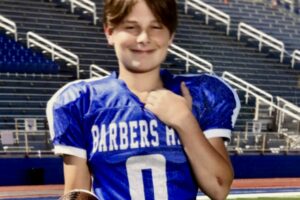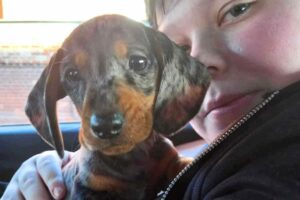In the summer of 2012, I was training hard, running, lifting weights, and eating clean. My goal was to be in my best shape for my best friend’s bachelor party in Las Vegas on Labor Day Weekend.
My wife and I also took a trip to Europe. I was running along cobblestone streets and swimming. Naturally, I was sore and tired.
In early August, I was at my mom’s doctor’s appointment with her. While waiting in the lobby, I had a sudden pain in my chest and couldn’t breathe. The nurses connected me to an EKG machine to make sure I was not having a heart attack. All was good. They said it was likely bad cramps from my morning back workout. Nobody thought to look into a PE. Nobody asked if I took a long trip.
About a week later, my calf felt like a machete was cutting through it. I was told it was probably a torn calf muscle. So the next morning I went to the ER to get it checked out and sure enough, it was a DVT and PE.
Doctors were shocked that a healthy, active 33-year-old could have this. Even after I got out of the hospital, doctors didn’t know what to do. I was on warfarin for a year.
Then in December of 2014, coming home on a bus from Key West, I noticed similar pain. For two years, I had been reading the NBCA’s website and learning as much as I could. I immediately knew what it was and went to the hospital where they found another DVT in my leg.
I also tested positive for HLA-B27 protein on my white blood cells. HLA-B27 is not directly associated with an increased risk of blood clots, but it is linked with an increased susceptibility to certain autoimmune diseases, which can increase the risk for clots.
The NBCA has been helpful not just in my recovery but has also armed me with the knowledge to save a few other colleagues of mine.
This experience has taught me that blood clot survivors can do anything, and that we are all a team. Anyone whose life has been affected by clots can relate to each other.




